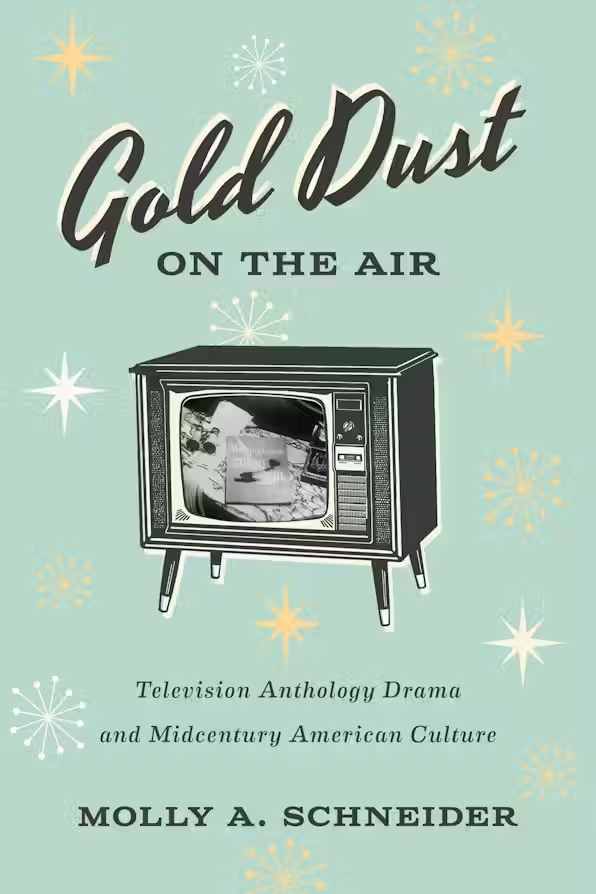In her new book Gold Dust on the Air: Television Anthology Drama and Midcentury American Culture, Molly A. Schneider reexamines the mythology surrounding the television anthology and expands our perception of this format—which, in contrast to its “Golden Age” reputation, varied widely in terms of budget, genre, and ideological messaging. Because anthologies were made up of stand-alone episodes without ongoing plots or recurring characters, they could be particularly nimble in terms of their aesthetics and politics, and take risks that could not have been sustained across full seasons or series. Schneider argues persuasively that the anthology drama provided a venue for discourses on American national identity during the massive cultural, economic, and political changes occurring at midcentury. In particular, she documents the programs’ complex and conflicting messages about the “right” and “proper” role of the individual in relation to the family, the community, and the nation, and deconstructs, through thematic analyses of representative teleplays, how these historically specific constructions of American identity were made.
As the first comprehensive academic monograph on the television anthology, Gold Dust on the Air provides a model of media-focused cultural history based on in-depth archival research. In addition to published material such as contemporaneous newspaper reviews, critical articles, and retrospective memoirs, Schneider assembles much of her history from extensive analysis of business records, scripts, production documents, and correspondence among industry professionals and with their viewers. Schneider combines this archival research with cultural studies approaches, using theoretical frameworks borrowed from Stuart Hall, Roland Barthes, Raymond Williams, and Michel Foucault.
This dual focus on culture and industry as interdependent, mutually determining forces is one of the book’s main strengths. Gold Dust on the Air traces many questions and concerns about the business of American television back to the medium’s origins in the mid-20th century. The discourses of “quality” and “prestige” that have stuck to the anthology drama series in our shared cultural imagination, and which continue to shape our evaluation of TV, emerged, Schneider shows, in a specific industrial context. While the technology of television was originally believed to hold the potential for a new form of dramatic realism, its American incarnation developed under a privately owned commercial model with the goal of selling audiences to advertisers. The prestige label attached to the anthology drama was thus part of the way the fledgling industry constructed its defense, invoking artistic quality against accusations of misusing the public airwaves for private gain.
